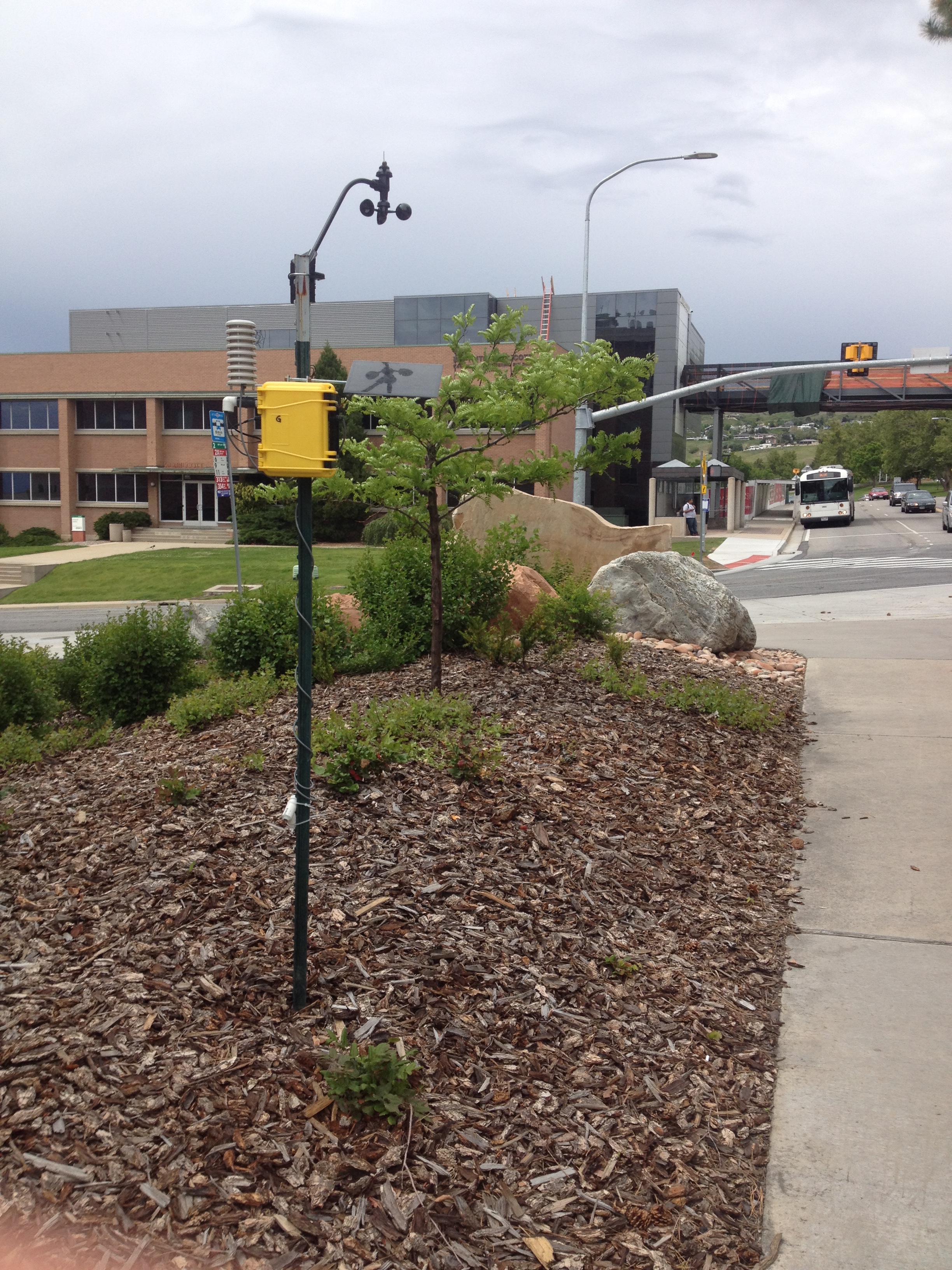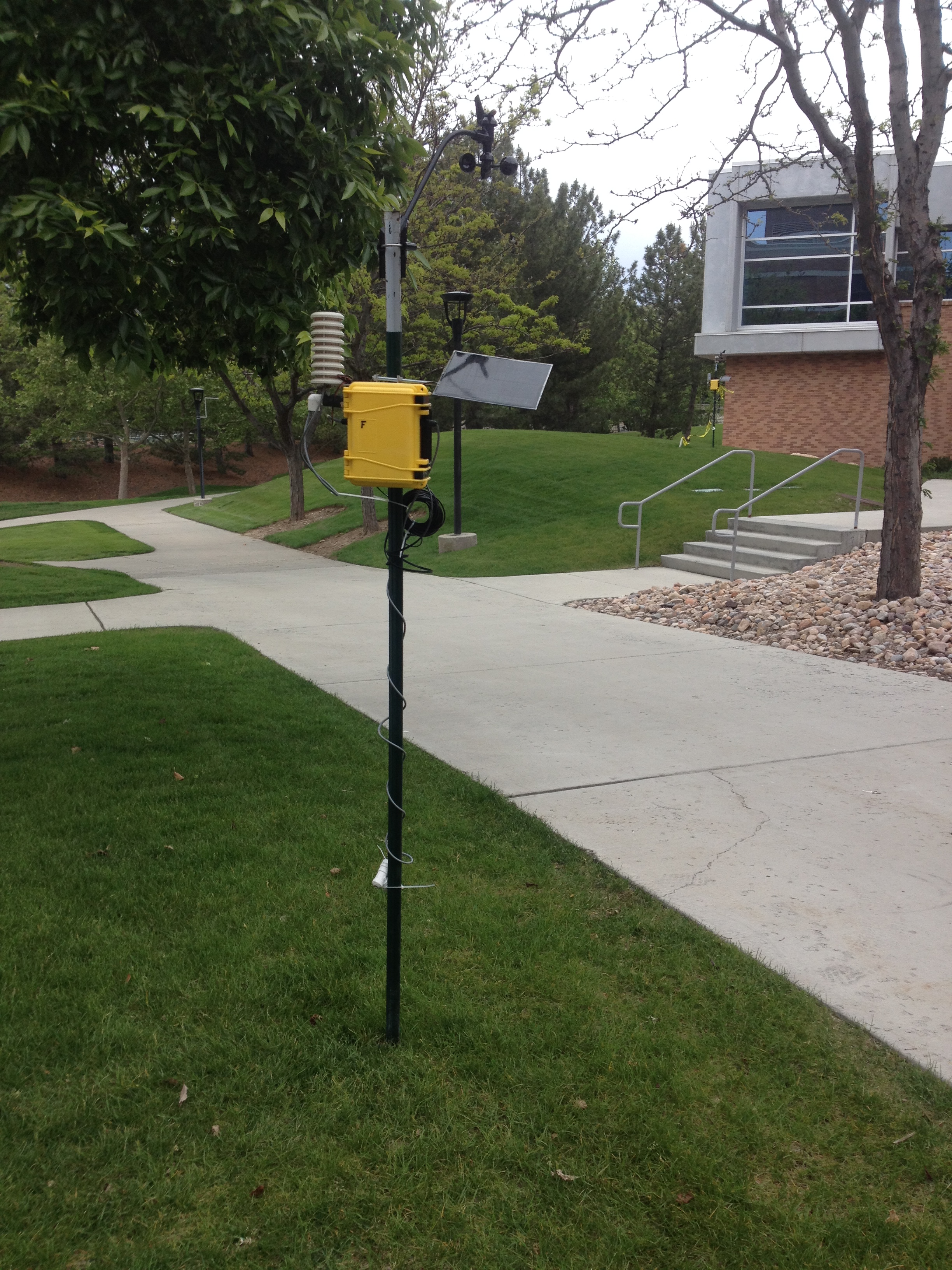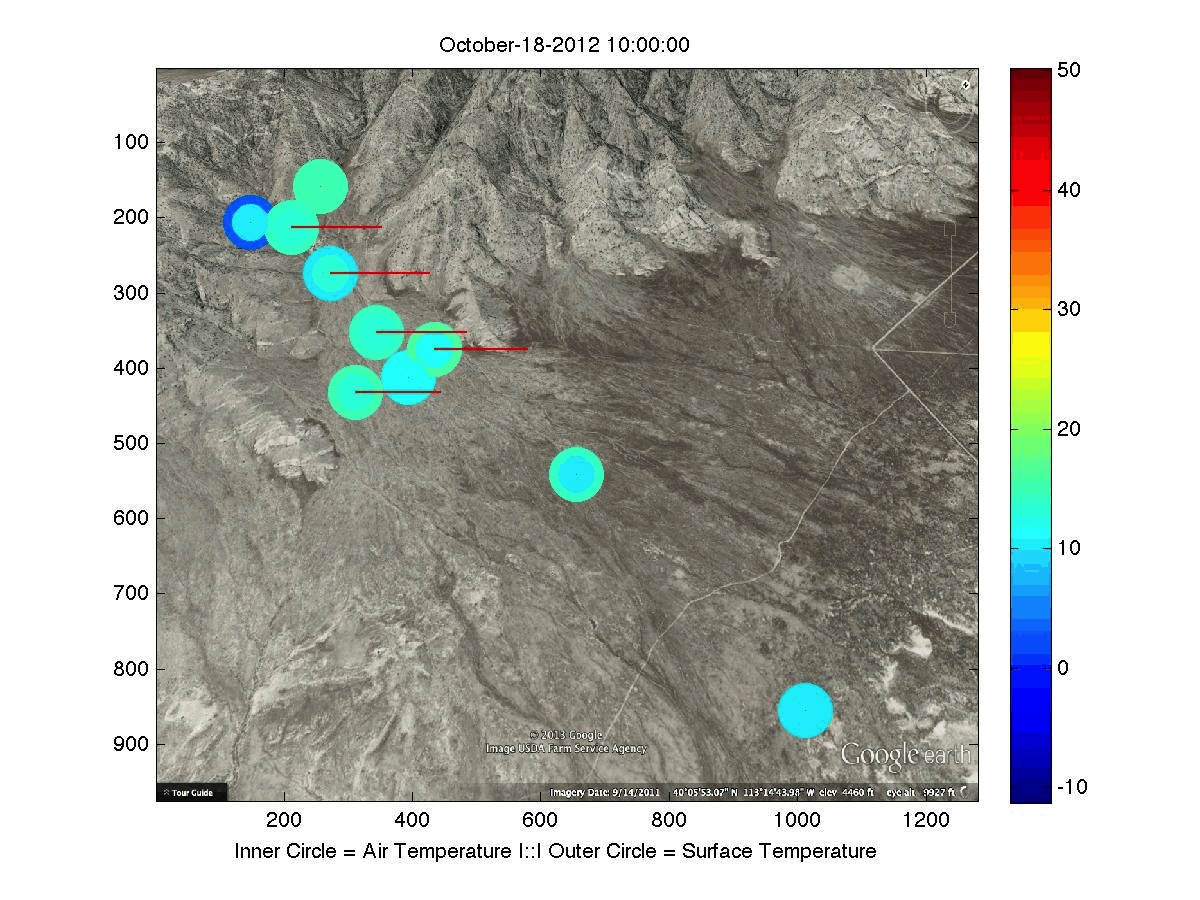LEMS – Local Energy-budget Measurement Stations


LEMS are solar powered, low-cost Energy-budget Measurement Stations, which have been designed and assembled at the University of Utah EFD lab. LEMS monitor incoming solar radiation (LI-200), 2-m air temperature and relative humidity (Sensirion SHT 15, Humidity +/- 2-5% Temperature +/- 0.5K), air pressure (Bosch BMP085), surface temperature (Zytemp TN9), wind speed/direction (Davis cup/vane), as well as soil temperature and moisture (Decagon 5TM) at two levels below ground. Data are logged using an Arduino-based open source controller with a data logger that can store up to 2 GB of data. Sensors have been developed and assembled by Nipun Gunawardena as part of the ONR funded MATERHORN project. The plot below shows data from LEMS and PWIDS (Portable Weather Display System - Dugway Proving Ground met stations). The plot shows the spatial distribution of surface temperature (large circle), air temperature (middle sized circle) and incoming solar radiation (smallest circles) along with wind vectors along the East Slope of Granite Peak at Dugway Proving Ground.
Additional experiments have been carried out with Prof. Rob Stoll's group using LEMS to measure microclimate variables in vineyards in Oregon. Currently, Pardyjak, Stoll and Smith are using LEMS as part of a QUIC EnvSim validation study on the University of Utah campus, which is part of our Distributed Power Generation NSF Grant.




